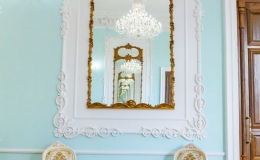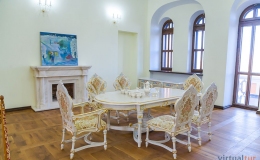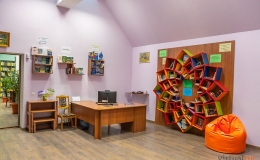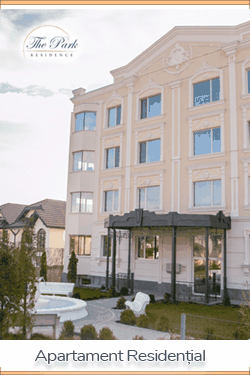VIRTUAL TOURS
ABOUT
The History of the Princely Palace and Manuc Bey Complex
Construction and Architecture
The construction of the Princely Palace began in 1857 and was completed in 1861, based on a design by the renowned architect Alexandru Bernardazzi. The interiors were reportedly decorated in four styles: Armenian, Turkish, Moldovan, and European.
It is believed that the famous painter Ivan Aivazovsky painted the ceilings of some palace rooms and created murals for the Armenian church.
Underground Tunnels
Hîncești is famous for its network of underground tunnels and galleries, which connected buildings and estates, serving as escape routes in times of danger. While most have been demolished, the tunnel linking the Princely Palace to the Iamandi House has been restored on the complex grounds.
Discoveries in the Princely Palace
During the palace's reconstruction, underground rooms that once housed Turkish baths were uncovered. Numerous architectural elements and artifacts were also found and are now displayed for visitors.
Iamandi House
From the Iamandi House, underground passages connected to the catacombs of Hîncești. These passages were used by the Mîrzaian family to escape during times of peril.
The Hunting Castle and Exhibits
The Hunting Castle hosts exhibits curated by the Museum of History and Ethnography. The collection includes ancient artifacts uncovered in excavations within the Hîncești district and cultural and household items from the past centuries.
Historical Events
-
In 1940, the estate and castle were turned into military barracks for a Soviet army unit. Upon retreat, the troops destroyed the Armenian Church and set fire to the Princely Palace.
-
In 1954, the Princely Palace underwent major renovations under the guidance of architect Robert Kurtz.
-
Starting in 1965, the building was repurposed as the headquarters for the Construction College.
Manuc Bey
Manuc Bey passed away only a year after purchasing the Hîncești estate, leaving no buildings of his own design. All structures, except the Iamandi House, were built by his descendants.



 Tel:
Tel:  Mob:
Mob:  E-mail:
E-mail: 









































 Developed by ilab.md
Developed by ilab.md